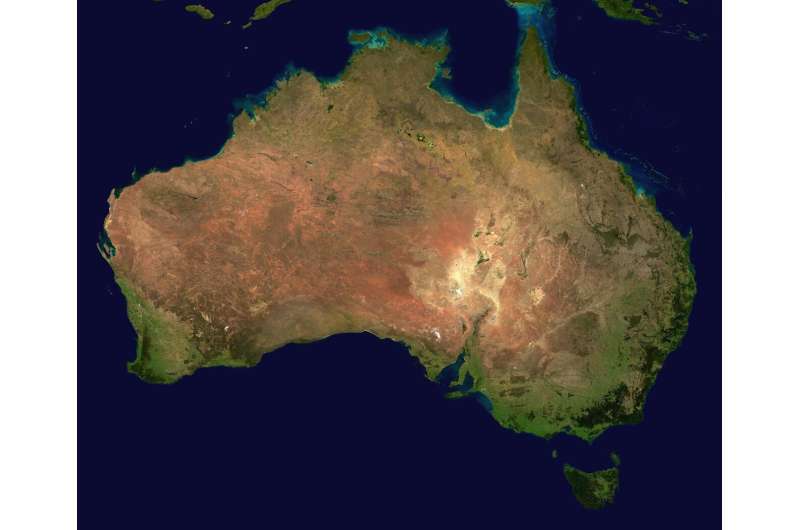Declining rainfall threatens unique stream species in Western Australia

Researchers from the Harry Butler Institute have warned of a loss of stream fauna in Southwestern Australia as permanent streams dry out each year.
Lead researcher and Ph.D. Candidate at the Harry Butler Institute, Nicole Carey, said recent climate change is altering the timing, duration and volume of river and stream flows globally, and in Southwestern Australia.
"Permanent flowing rivers and streams are drying and changing to intermittent flows, meaning they are now dry for several months each year," she said. "This is anticipated to have profound impacts on the survival of our stream fauna, including many of our ancient and unique species which are now threatened with extinction due to climate change."
"Southwestern Australia is a world-renowned biodiversity hotspot, and many of our stream fauna including dragonflies, caddisflies and mayflies are found nowhere else on earth."
These species play a pivotal role in maintaining freshwater ecosystems by recycling nutrients as well as providing food to species further up the food chain.
"They have also been here for a very long time, and widespread losses of these species will not only reduce the uniqueness of our fauna but potentially impact the ecosystem processes they moderate," said Ms Carey.
In a year-long study, Ms Carey alongside supervisor, Dr. Belinda Robson, examined the life cycle of 13 formerly most common species in Northern Jarrah forest streams, including mayflies, caddisflies, stoneflies, a dragonfly, and an amphipod.
"We compared the life cycles to a study conducted in the early 1980s, well prior to the onset of seasonal drying, and used this historic life history data to predict whether each species would adapt to the new flow regime," said Ms Carey.
The study found four species—one stonefly, two mayflies, and an amphipod—adapted to the new flow regime but showed different responses to those predicted.
Ms Carey explained most species were now restricted to permanent streams, having become locally extinct because of drying, even when historical data of their life cycle had predicted their survival.
"Life history traits such as life cycle timing, number of generations per year, and ability to use desiccation resistant eggs, are commonly used to predict survival under climate change. However, there have been few opportunities to directly examine species responses to real climate impacts until now," she said.
"We found that life history flexibility was the most important determinant of successful adaptation, not previous life history traits.
Ms Carey reiterated their research has shown there is an urgent need to better understand species life history flexibility when making predictions about their survival under climate change.
"This is essential, because predictions based on species traits may underestimate extinction risk if species are not flexible," she said.
"We need to understand how species respond if we're to help inform future policy and conservation management practices."
Provided by Murdoch University



















